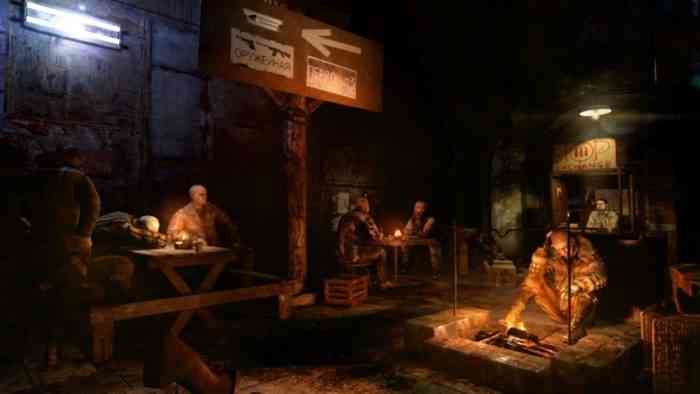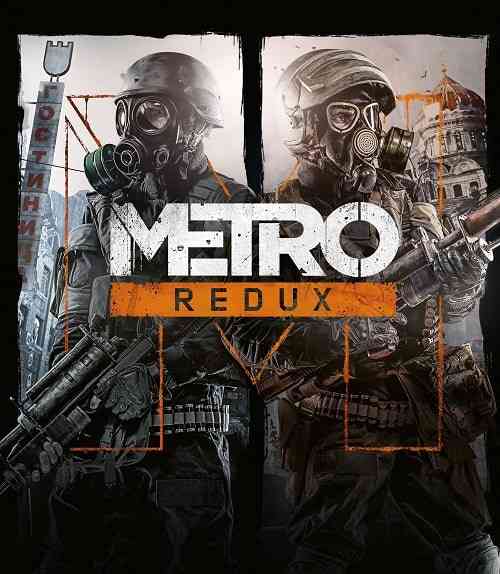Metro Redux Nintendo Switch Review
Based on the acclaimed novels, the Metro series has always been synonymous with gritty, campaign based first person horror set in a not-that-unrealistic future. The series has been on a steady climb in popularity and innovation, growing as the years go on. Two particularly popular entries – Metro 2033 from 2010 and Metro: Last Light from 2013 – were given the remaster treatment in the form of Metro Redux back in 2014 to current gen consoles. It seems the double pack is once again getting another chance, this time brought to life on the Nintendo Switch (as is the popular thing to do these days) but is this a move worth investing in?
Metro 2033 tells the story of young Artyom, a Russian boy born just before the nuclear event which turned Russia into a desolate waste, and the people surviving by finding shelter in the underground metro. The people are fighting for survival every day against irradiated horrors and a lack of supplies, but they some how manage to persevere. Metro 2033 is based on the book of the same name, turned into a stealth based, survival horror first person shooter. While Metro 2033 is in fact a great game for its time, it’s presence on the Switch is not needed and sadly not particularly satisfying.
Is Survival Really Worth It?
From the narrative perspective, Metro 2033 didn’t really age well. Since its release we have seen a number of games with similar apocalyptic themes that have revised and refined the idea making this version rather dull. While it uses a few elements to reinforce the survival/horror nature of the game in a well meaning manner, it falls flat in making for an enjoyable experience. The HUD is minimalistic at best, offering no minimap, compass, objective marker, or general guidance. This is fine in principle- it reinforces the fear of being lost. The problem however is how easy it is to, well, get lost. NPC’s designed to guide you to your next location will bolt without hesitation to the next point far away, leaving you no time to explore the environment. With no marker to guide you it takes no time at all to be left completely in the dark which brings me to the most glaring flaw: the darkness.

Metro 2033 has no setting to adjust the light. While its aim is to be atmospheric and scary by nature, it can only really be played on the TV in a pitch black room. The goal of the Switch is portability, but it is nearly impossible to enjoy large segments of the game on the go because you simply cannot see the game even with a regular light turned on. This is a huge hindrance for the game as it limits when it can be played effectively, and if I can’t take it on the go, why buy it for Switch?
Mechanically speaking, the shooting aspect of the game is what you expect; it’s sound but not anything immaculate, just a good time shooting mutants in the face. I did find movement to be a pain as Artyom’s walking speed is significantly slower than most games – and the NPCs – but his running speed is far greater with no happy middle. It’s also annoying when surrounded by monsters and I have no indication where they are attacking from, nor can I see them in the dark.
This brings me to the other half of Metro Redux, namely Metro: Last Light. A sequel to Metro 2033 set one year later, however NOT connected to the novelizations, Last Light is a game in stark contrast to its predecessor. Artyom is now a Ranger and a dangerous fight is coming to the D6 bunker as rumors spread of their vast supplies. The Nazis – among other regimes – all plan to attack, and there has been sighting of a Dark One since their nest was destroyed in the previous game. Immediately I noticed a stronger, more compelling narrative that started concise and continued on in a more interesting fashion. This was not a slow burn into a heroic tale, but rather a redemption story that begins in danger.

Metro: Last Light was also notable for its greater environmental details and the fact I could actually see them. While there are still dark segments of the game, the flashlight and general lighting has been revamped to still be comfortably playable in handheld mode. Combat feels the same as the previous game, but the tutorial is much more flushed out and engaging than I had found in previous games. It’s true that Last Light feels like more of an action game than a horror game, but it still delivers on the elements I expect from Metro with the themes of isolation, loss, the horrors of war, and the attempts to survive an even more harsh reality. Even the characters you encounter are much more interesting and engaging than those found in Metro 2033.
I understand that these games are linked and not everyone would want to jump into such a nuanced plot part way into the story by starting with Last Light, but of the two I find the latter to be a vastly superior experience on the Switch. Had they opted to only port Metro: Last Light it would have definitely been worth it, but as Metro 2033 had already been part of the repackage in Metro Redux I can see why they decided to offer both games. 2033 isn’t unplayable, but if I can’t comfortably play the game on the go than I would rather grab it on one of the other consoles instead. While the games themselves are fairly solid, nothing about them stands out quite enough to warrant purchasing them again unless you are a die hard fan of the franchise. Given that Metro Exodus only released last year and follows as a direct sequel to Last Light, your money might be better spent jumping into the latest entry in the series than revisiting something 10 years old.
*Nintendo Switch code provided by the publisher*
The Good
- Sound Shooting Mechanics
- Atmospheric
- Enticing Stealth Gameplay
The Bad
- Too Dark To See (2033)
- Formulaic Narrative

